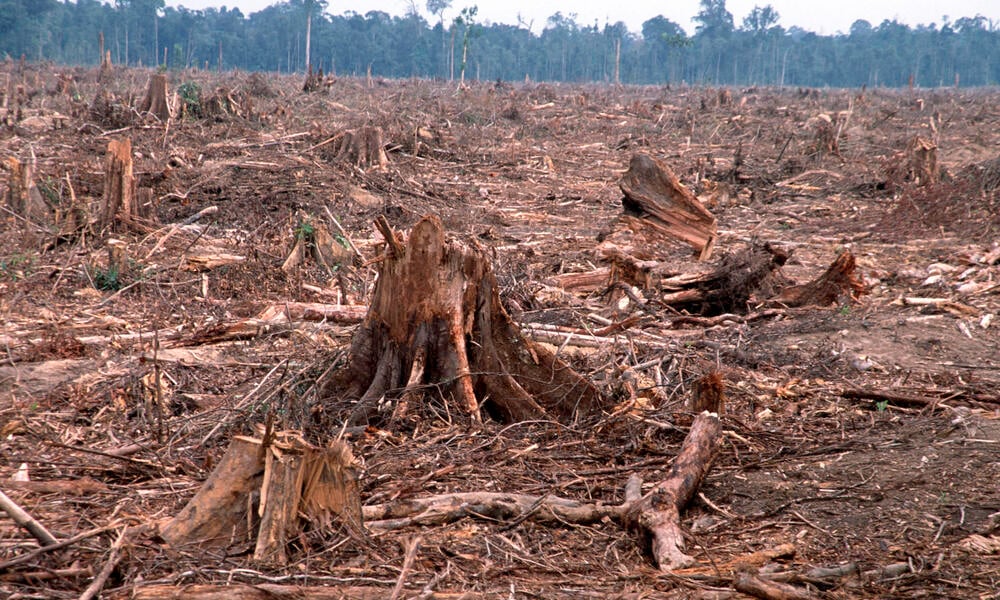For the Earth and the Animals
Plant-based diets have gained popularity over recent decades, not only due to their health benefits, but also due to ethical concerns of animal agriculture, and the planetary health and sustainability benefits.
©2024 Physicians Committee for Responsible Medicine PCRM is a 501(c)(3) nonprofit organization.
12/2/20243 min read


For the Environment
Animal agriculture is a major contributor to greenhouse gas emissions, primarily methane and nitrous oxide, and requires more natural resources than crop farming. A 2023 analysis found that a vegan diet resulted in 75% less total greenhouse gas emissions than a diet containing 100 grams (about 3.5 ounces) or more of meat per day. A vegan diet also required 50% less water and land use [17].
Animal agriculture is one of the leading drivers of deforestation and habitat destruction, as vast areas of land need to be cleared to make way for grazing livestock and growing feed crops. Cattle farms occupy around 80% of the deforested land in the Amazon [18]. Switching to a vegan diet results in far less biodiversity loss, and if the world switched half of its meat and dairy products to plant-based alternatives, we could potentially end deforestation [19].
Even small amounts of animal products in a person’s diet can have a big impact on their environmental footprint. Research published in 2023 compared a vegan diet, containing no animal products, with a Mediterranean diet that included just more than 10% of daily calories from meat and dairy, which were matched for total calories. A vegan diet came out on top with a 44% lower total environmental impact [20].
Many people are quick to point a finger at the soy consumed by vegans as having a significant environmental impact; however, more than 70% of the soy grown in the United States is used to feed animals, while 15% is used for soybean oil for many processed foods and sauces, and 5% is used to produce biofuel, leaving a small amount for human consumption in the form of tofu or soy milk [21].
To learn more about the effects our food choices have on the environment, visit PCRM's Eating for the Environment page.
For the Animals
More than 2.8 million cows, 10 million pigs, and 9 billion chickens are slaughtered over the course of a year in the United States, according to the U.S Department of Agriculture [22,23]. This equates to Americans eating more than 1 million cows, pigs, and chickens every single hour. Most of these animals are raised on factory farms, more officially known as concentrated animal feeding operations (CAFOs).
There are more than 21,500 CAFOs in the United States alone. These farms subject animals to intensive confinement, overcrowded and unnatural conditions, and inhumane treatment, before being slaughtered, often in ways that subject the animals to intense pain and distress.
Not only are CAFOs an ethical concern, but they also contribute to more than 50% of zoonotic diseases, such bird flu, and to global antibiotic resistance due to the widespread overuse and misuse of antibiotics to prevent disease spreading among animals in such confined conditions.
You can also watch Dr. Neal Barnard on the Intelligence Squared debate titled “Don’t Eat Anything With a Face” to learn more.
Consuming a plant-based diet is one of the best things you can do for your own health, and it is one of the easiest ways you can reduce your environmental impact and reduce the demand for unethical farming and slaughterhouse practices. By making an actionable change every single day through the food you choose to consume, you can make a difference.
References
Scarborough P, Clark M, Cobiac L, et al. Vegans, vegetarians, fish-eaters and meat-eaters in the UK show discrepant environmental impacts. Nat Food. 2023;4:565-574. doi:10.1038/s43016-023-00795-w
Brindis D. Slaughtering the Amazon. June 2009. Accessed June 28, 2024. https://www.greenpeace.org/usa/research/slaughtering-the-amazon/
Kozicka M, Havlík P, Valin H, et al. Feeding climate and biodiversity goals with novel plant-based meat and milk alternatives. Nat Commun. 2023;14:5316. doi:10.1038/s41467-023-40899-2
Filippin D, Sarni AR, Rizzo G, Baroni L. Environmental impact of two plant-based, isocaloric and isoproteic diets: the vegan diet vs. the Mediterranean diet. Int J Environ Res Public Health. 2023;20(5):3797. doi:10.3390/ijerph20053797
United States Department of Agriculture. USDA coexistence fact sheets soybeans. 2015. Accessed June 28, 2024. https://www.usda.gov/sites/default/files/documents/coexistence-soybeans-factsheet.pdf
United States Department of Agriculture. Poultry slaughter 2021 summary. 2022. Accessed June 28, 2024. https://www.nass.usda.gov/Publications/Todays_Reports/reports/pslaan22.pdf
United States Department of Agriculture. Livestock slaughter. 2022. Accessed June 28, 2024. https://www.nass.usda.gov/Publications/Todays_Reports/reports/lstk0522.pdf
elaine@earthplantsandpower.com
© 2024. All rights reserved.
Elaine Palmquist


